Author: Jordan Folks
Without bitterness, beer would be an unpleasantly sweet mess, and the way modern brewers contribute this balancing bitterness is through the use of hops, which contain alpha acids (AA) that isomerize when added to boiling wort. Alpha acid content varies between different hop varieties, ranging anywhere from around 2% AA up to 20% AA, and this is used by brewers to determine the amount of hops required to achieve certain bitterness levels.
Many classic European hop varieties, as well as their modern progeny, fall on the lower end of the alpha acid spectrum and require a relatively high usage rate to achieve desired bitterness levels. One such example is Saphir, a German hop variety that averages around 3.2% AA. On the other end of the spectrum are hops such as Warrior, a notably clean American variety that averages closer to 16.5% AA. While some brewers prefer the economical approach of using lower amounts of higher alpha hops, which is often buttressed by the belief that early kettle additions impart nothing but bitterness, others claim the increased amount of hops required when using lower alpha varieties has a meaningful perceptible impact on the finished beer, at least when making certain styles.
I’ve been on a West Coast Pilsner kick lately, and while I’ve generally relied on higher alpha hops for bitterness, I recently learned that some reputable breweries were opting for higher amounts of lower alpha hops when brewing this style. This purportedly leads to a more classic Pils-like bitterness that melds well with the later additions of modern hops associated with West Coast Pilsner. With some low alpha Saphir and high alpha Warrior on hand, I designed an xBmt to test this one out for myself!
| PURPOSE |
To evaluate the differences between a West Coast Pilsner bittered to the same predicted IBU with either a high amount of low alpha Saphir hops (2.3% AA) or a low amount of high alpha Warrior hops (15.4% AA).
| METHODS |
I went with a West Coast Pilsner recipe based off of past successful batches for this xBmt, the only difference being the type and amount of hops used for bittering. Big thanks to F.H. Steinbart for hooking me up with the malt for this batch!
Golden Door
Recipe Details
| Batch Size | Boil Time | IBU | SRM | Est. OG | Est. FG | ABV |
|---|---|---|---|---|---|---|
| 6.3 gal | 60 min | 62.3 | 4.1 SRM | 1.046 | 1.006 | 5.25 % |
| Actuals | 1.046 | 1.006 | 5.25 % | |||
Fermentables
| Name | Amount | % |
|---|---|---|
| Weyermann Pils | 14 lbs | 100 |
Hops
| Name | Amount | Time | Use | Form | Alpha % |
|---|---|---|---|---|---|
| Saphir OR 14 g Warrior (15.4% AA) | 95 g | 60 min | Boil | Pellet | 2.3 |
| Mosaic | 85 g | 10 min | Aroma | Pellet | 11.5 |
| Motueka | 43 g | 10 min | Aroma | Pellet | 7.5 |
| Riwaka | 43 g | 10 min | Aroma | Pellet | 5 |
| Mosaic Lupomax | 85 g | 2 days | Dry Hop | Pellet | 16 |
| Motueka | 50 g | 2 days | Dry Hop | Pellet | 7 |
| Riwaka | 43 g | 2 days | Dry Hop | Pellet | 5.3 |
| Mosaic SPECTRUM | 10 g | 2 days | Dry Hop | CO2Extract | 12.3 |
Yeast
| Name | Lab | Attenuation | Temperature |
|---|---|---|---|
| Global (L13) | Imperial Yeast | 77% | 46°F - 55.9°F |
Notes
| Water Profile: Ca 80 | Mg 4 | Na 10 | SO4 132 | Cl 40 |
Download
| Download this recipe's BeerXML file |
After collecting the full volume of water for two 5 gallon/19 liter batches, adjusting them to the same desired profile, and getting them heating up, I milled the grains.
When the waters were properly heated, I stirred in the grains for each batch and set my Clawhammer Supply 240v controllers to maintain the same 148°F/64°C.
During the mash rests, I weighed out the kettle hop additions for each batch, the only difference being the variety and amount used at the start of the boil. To note – the amounts of each bittering hop were determined based on how much it would require to achieve a predicted 25 IBU from the initial addition for each variety.
Once the mash rests were finished, I collected the worts and proceeded to boil them for 60 minutes, adding hops at the times listed in the recipe.
When the boils were complete, I quickly chilled the worts with my JaDeD Brewing SS Coil Hydra before taking refractometer readings showing they were at the same OG.
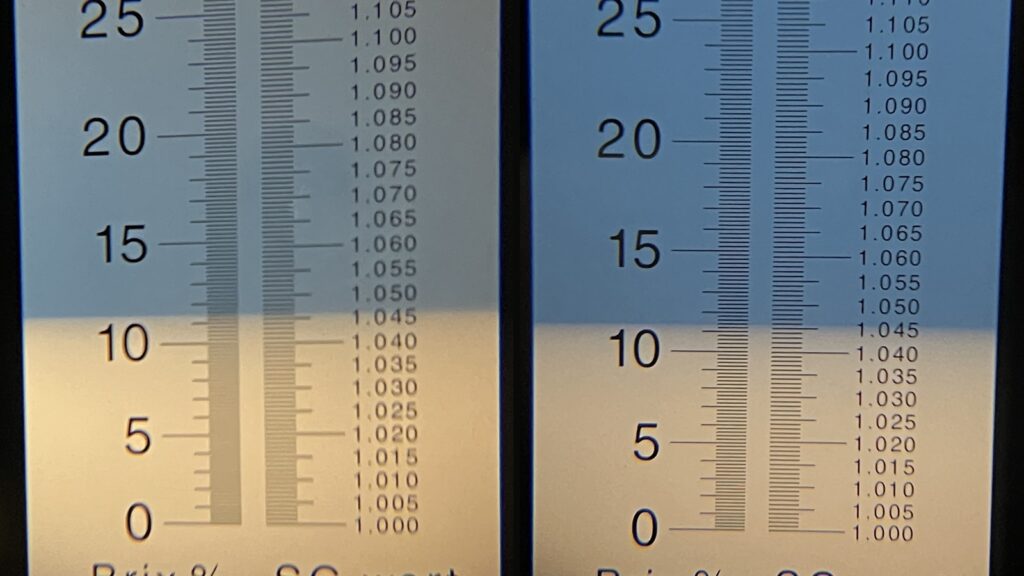
After transferring identical volumes wort from each batch to sanitized fermentation kegs, they were placed in my chamber to finish chilling to be desired pitching temperature of 48°F/9°C before each received two pouches of Imperial Yeast L13 Global.
The beers were left to ferment at 50°F/10°C for two weeks before I let the temperature free-rise to 60°F/16°C, at which point I added the dry hops. After 24 hours, I took hydrometer measurements indicating a very slight difference in FG between the beers.

At this point, I cold crashed the beers to 33°F/0.5°C overnight then transferred them to CO2 purged serving kegs along with gelatin fining. The beers were placed on gas in my keezer where they were left to condition for 3 weeks before they were ready for evaluation.
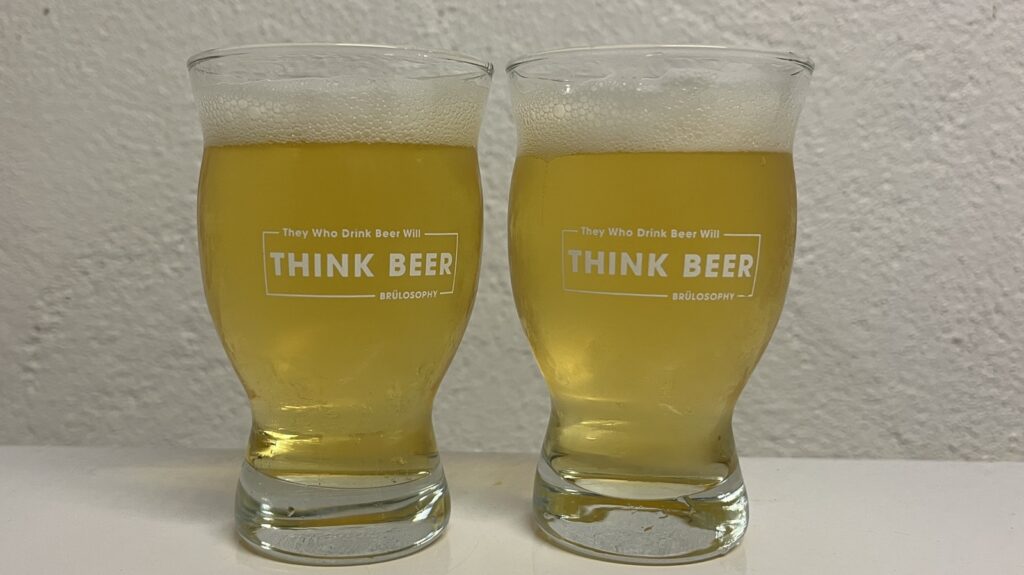
| RESULTS |
A total of 24 people of varying levels of experience participated in this xBmt. Each participant was served 2 samples of the beer bittered with low alpha Saphir hops and 1 sample of the beer bittered with high alpha Warrior in different colored opaque cups then asked to identify the unique sample. While 13 tasters (p<0.05) would have had to accurately identify the unique sample in order to reach statistical significance, only 6 did (p=0.86), indicating participants in this xBmt were unable to reliably distinguish a West Coast Pilsner that was bittered with low alpha Saphir hops from one bittered to the same IBU with high alpha Warrior hops.
My Impressions: Out of the 5 semi-blind triangle tests I attempted, I correctly identified the odd-beer-out 3 times, though admittedly, I perceived these beers as being indistinguishable in side-by-side comparisons. As such, I had no preference and felt both were excellent examples of West Coast Pilsner.
LAB ANALYSIS
Curious of the actual differences in IBU between these beers, we collaborated with Oregon Brew Lab on this xBmt, who provided the following lab data.
| Hop Variety | Predicted IBU (Tinseth) | Lab Results |
| Saphir Hops | 62 | 45.8 |
| Warrior Hops | 62 | 39.8 |
| DISCUSSION |
Bitterness is an essential aspect of beer, responsible for balancing malt sweetness while also contributing a refreshing bite. In this day and age, hops are used for this purpose, typically in the form of early kettle additions, and while some brewers prefer to add fewer high alpha hops, others feel the heavier use of lower alpha varieties positively affects the finished product. Interestingly, tasters in this xBmt were unable to reliably distinguish a West Coast Pilsner bittered with 2.3% AA Saphir hops from one bittered with a lower amount of 15.4% AA Warrior hops.
One presumable explanation for this result is that, with the exception of alpha acid content, Saphir and Warrior are similar in other respects; however, that doesn’t appear to be the case, as components like cohumulone, myrcene, and humulene are quite different. Another possibility is that any characteristic differences caused by the bittering addition was covered up by the subsequent hopping with more pungent modern varieties.
While a couple past xBmts on the same variable indicated similar findings, I still expected these beers to be distinguishable due simply to the fact that batch bittered with Saphir had 81 grams more hops added at the start of the boil than the one bittered with Warrior. The fact they weren’t offers some personal validation about my use of higher alpha hops for bittering, which I’ve no plans to change when making West Coast Pilsner henceforth, though in a pinch, I’d have no qualms going with a lower alpha variety.
If you have any thoughts about this xBmt, please do not hesitate to share in the comments section below!
Support Brülosophy In Style!
All designs are available in various colors and sizes on Amazon!
Follow Brülosophy on:
FACEBOOK | TWITTER | INSTAGRAM
If you enjoy this stuff and feel compelled to support Brulosophy.com, please check out the Support page for details on how you can very easily do so. Thanks!


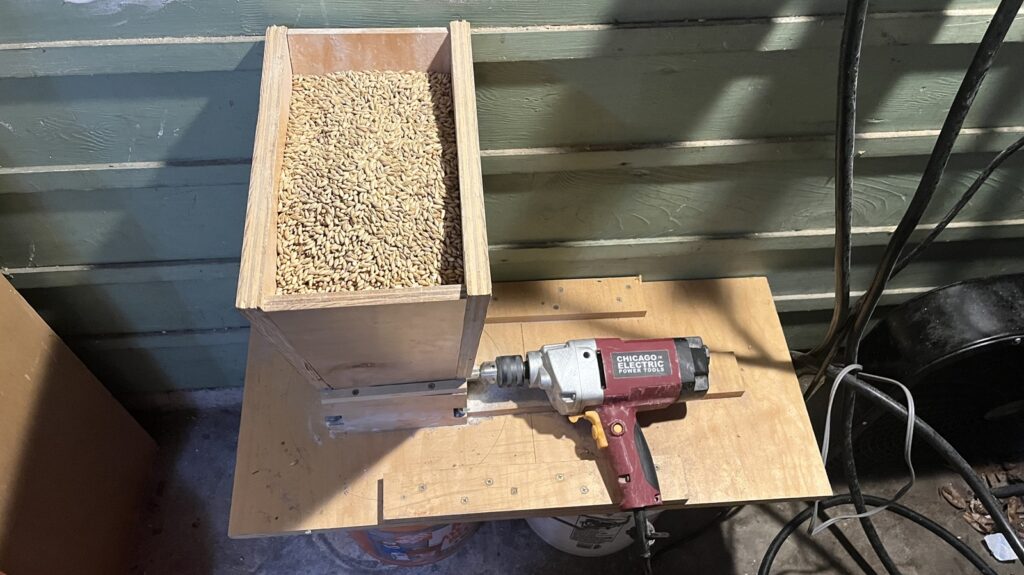
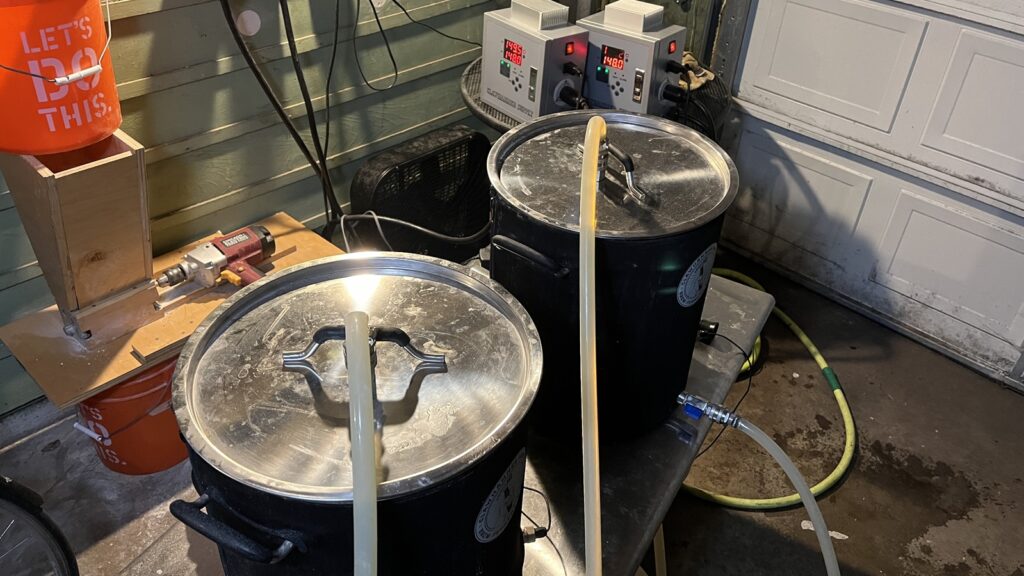
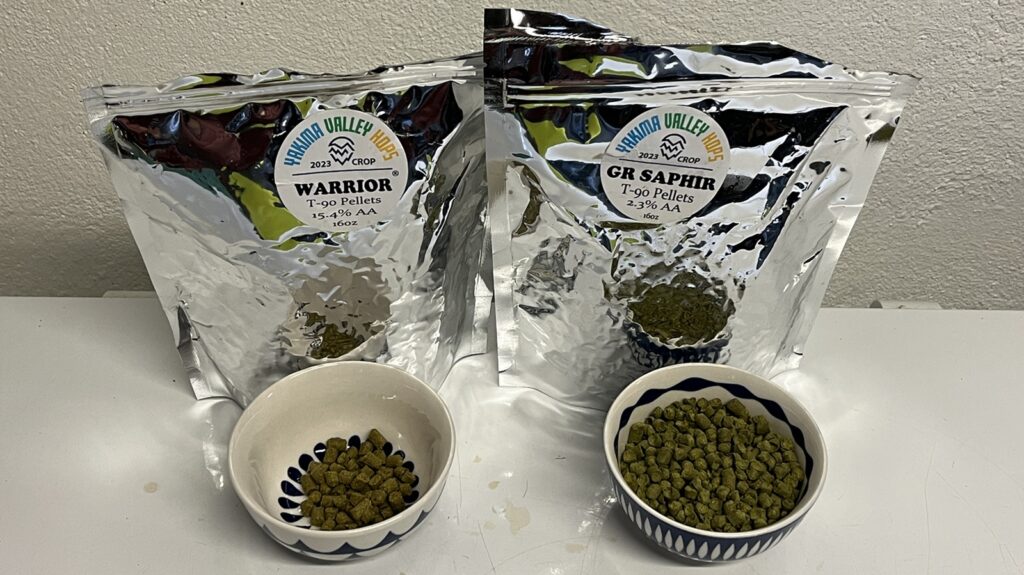
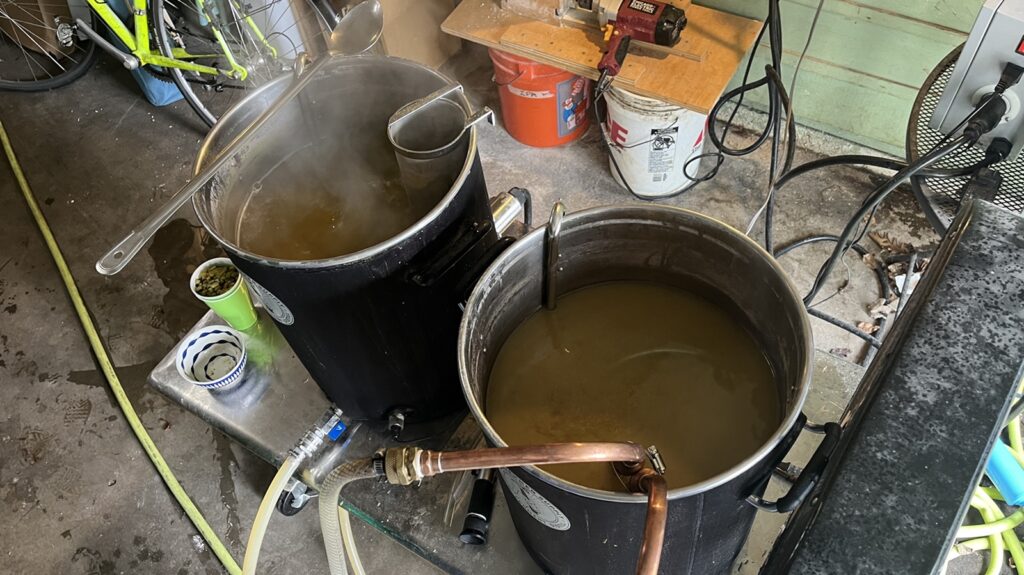

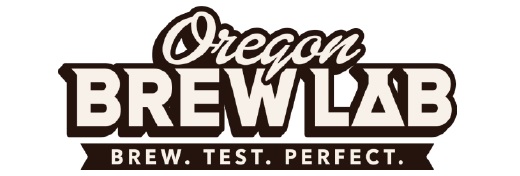






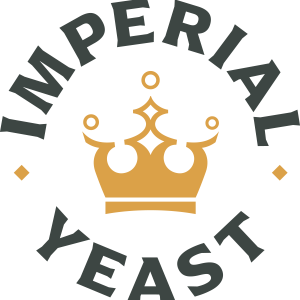

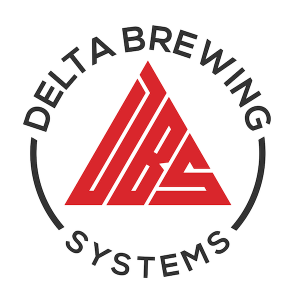

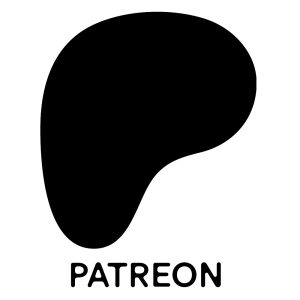
10 thoughts on “exBEERiment | Bittering Hops: Saphir vs. Warrior When Used For Bittering In A West Coast Pilsner”
It’s something I started to do recently as well. Hops price won’t break my wallet but any buck I can save and still make equally good beer is a win for me. 0.5 oz of Magnum will replace 5$ of Saaz. My question now is how little late hops can I get away with, without making a beer that only taste Magnum?
I would only use clean high alpha bittering varieties (like Magnum, Warrior) for the initial bittering addition. Any additions after that, I’d be using more aroma/flavor-driven varieties
Interesting results. Did Oregon Brew Lab have any hypothesis on the Warrior batch measuring lower in actual IBU? Maybe all the extra plant material of the Saphir is helping to achieve an IBU level that is closer to the predicted IBU’s. Thus giving users of lower AA hops the perception it makes a difference when used for bittering additions.
We reached out to Oregon Brew Lab’s CEO/Senior Chemist Dana Garves, and she replied: “I am not surprised the humulones extracted for IBUs was lower than your calculations. I couldn’t honestly say WHY the IBUs are lower than calculated – but it’s a frequent occurrence for homebrewers who test their beer. There’s lots of theories about hop companies using lower quality hops for homebrewing side, there’s a lot to say about the assumptions that each calculator makes, and homebrewing’s ability/inability to match efficiency and extraction – even all-in-ones aren’t able to replicate commercial vessels. In fact a local Portland homebrewer John-Paul Hosom did a round of IBU testing way back in 2015 or 2016, saw the massive difference and proceeded to write an online dissertation about homebrewing and IBUs. Studying the effects and interplay of IBUs with different gravity worts, polyphenols, etc. You can find the blog here, it’s well worth the read. https://jphosom.github.io/alchemyoverlord/”
Note: We interviewed John-Paul about this project back in episode 76 of the Brü Lab if you want to hear more about that.
I’m a big fan of the Alchemy Overlord SMPH calculator.
Before using his calculator and trying to brew to style I’ve always aimed for the high range for IBUs because to get a level of bitterenss that represents the style, but even then it felt low (ie using conventional calcs to brew 100IBU IPA resulted in beers that tased more like 60IBU).
Since using his calc, I feel like his IBU predictions reflect what I taste far better, especially in Pilsners, Pales, and proper IPA where a decent level of bitterness is super important.
There’s no point trying to hit style numbers if your calculator is broken.
Hi Jordan Say what program did you use to calculate IBUs? Seems it underestimated the true value.
Roy Ventullo
I used BrewFather. With this data, I can now adjust the hop utilization rate in the Brewfather app so I can more accurately predict IBUs for future brews!
I think your speculation that the later hop additions clouded the results is right on. When I saw the hop schedule my reaction was that it was a dogs breakfast. Brulosophy has an established record of doing this. Asking an interesting question then designing an experiment with predictability obscure results. If you want a valid experiment and result just use the hops in question for bittering only. Eliminate the confounding, unnecessary variables. The idea is not to make a good beer. It is to test hypothesis, leading to improved methods and recipes.
To be fair, this was a very style-specific research question about whether noble bittering hops make better/different WC Pils (as I’ve heard many pro brewers claim they are getting a special type of impact from noble bittering hops that ties old world with new in this burgeoning style).
Thanks Jordan for the reply. I accept that your goal was to brew a specific style. I am always on the lookout for objective information about efficient, low pungency bittering hops. What I gleaned from this is that Warrior would be a good choice. I’ll give it a try. Last night I worked up a Mexican lager recipe and have tentatively chosen Amarillo for bittering. My normal go-to is Northern Brewer. Salud!